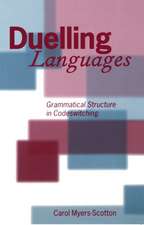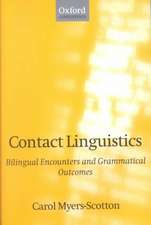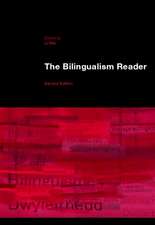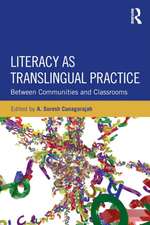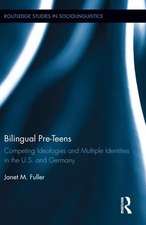Second Language Acquisition: Second Language Systems
Autor Neal Snape, Tanja Kupischen Limba Engleză Paperback – 5 oct 2016
Preț: 271.76 lei
Preț vechi: 333.19 lei
-18% Nou
Puncte Express: 408
Preț estimativ în valută:
52.00€ • 55.61$ • 43.36£
52.00€ • 55.61$ • 43.36£
Carte disponibilă
Livrare economică 27 martie-10 aprilie
Preluare comenzi: 021 569.72.76
Specificații
ISBN-13: 9781137367068
ISBN-10: 1137367067
Pagini: 246
Ilustrații: 5 bw illus
Dimensiuni: 156 x 234 x 19 mm
Greutate: 0.42 kg
Ediția:1st ed. 2017
Editura: Bloomsbury Publishing
Colecția Red Globe Press
Locul publicării:London, United Kingdom
ISBN-10: 1137367067
Pagini: 246
Ilustrații: 5 bw illus
Dimensiuni: 156 x 234 x 19 mm
Greutate: 0.42 kg
Ediția:1st ed. 2017
Editura: Bloomsbury Publishing
Colecția Red Globe Press
Locul publicării:London, United Kingdom
Caracteristici
The first linguistics oriented textbook on Second Language Acquisition for advanced undergraduate and postgraduate students
Notă biografică
Neal Snape obtained his Ph.D. in Language and Linguistics from the University of Essex, UK. He completed a post-doc and taught ESL at the University of Calgary, Canada and taught EFL and Linguistics at Hokkaido University, Japan. His research interests include adult second language acquisition. He is currently affiliated with Gunma Prefectural Women's University, Japan. Tanja Kupisch obtained her Ph.D. in Romance Linguistics from the University of Hamburg, Germany. She has worked as a researcher and teacher at the University of Calgary, Canada, McGill University, Canada, University of Hamburg, Germany, Lund University, Sweden, the University of Konstanz, Germany and The Artic University of Norway in Tromsø, Norway. Her research interests include early bilingualism, heritage bilingualism, first, second language and third language acquisition, bilectal language acquisition and language dominance.
Cuprins
Introduction1. An Introduction to Linguistic Terms2. Acquisition of Verbal Morphosyntax3. Acquisition of Nominal Morphosyntax4. A Comparison between UG and non-UG frameworks5. L2 Phonology6. Simultaneous bilingualism.

